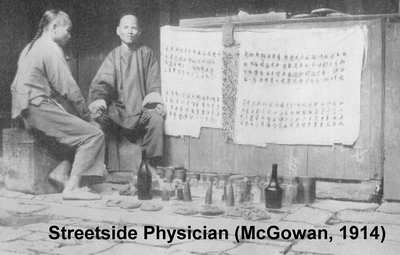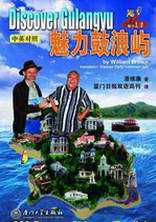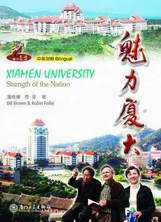![]() Click
to
Access
Click
to
Access
OUTSIDE China
![]() Click
to Access
Click
to Access
INSIDE
China ![]()
TRAVEL LINKS
![]() Xiamen
Xiamen
![]() Gulangyu
Gulangyu
![]() Jimei
Jimei
![]() Tong'an
Tong'an
![]() Jinmen
Jinmen
![]() Zhangzhou
Zhangzhou
![]() Quanzhou
Quanzhou
![]() Wuyi
Wuyi
![]() #1Fujian
Sites!
#1Fujian
Sites!
![]() Fujian
Foto Album
Fujian
Foto Album
![]() Books
on Fujian
Books
on Fujian
![]() Readers'Letters
Readers'Letters
![]() Ningde
Ningde
![]() Zhouning
Zhouning
![]() Longyan
Longyan
![]() Sanming
Sanming
![]() Putian
Putian
![]() Bridges
Bridges
![]() Travel
Info,
Travel
Info,
![]() Hakka
Roundhouses
Hakka
Roundhouses
![]() Travel
Agents
Travel
Agents
MISC. LINKS
![]() Amoy
People!
Amoy
People! ![]()
![]() Darwin
Driving
Darwin
Driving ![]()
![]() Amoy
Tigers
Amoy
Tigers
![]() Chinese
Inventions
Chinese
Inventions
![]() Tibet
in 80 Days!
Tibet
in 80 Days!![]()
![]() Dethroned!
Dethroned!
![]()
![]() Misc.Writings
Misc.Writings
![]() Latest
News
Latest
News
![]() Lord
of Opium
Lord
of Opium
![]() Back
to Main Page
Back
to Main Page
![]() Order
Books
Order
Books![]() Xiamenguide
Forum
Xiamenguide
Forum 
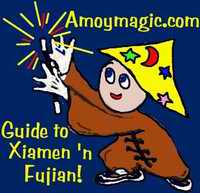
![]() Chinese
Version
Chinese
Version ![]() "Gulangyu--Cradle
of Tropical Medicine"
"Gulangyu--Cradle
of Tropical Medicine"
![]() "John
Otte--Missionary Doctor, Architect, Carpenter"
"John
Otte--Missionary Doctor, Architect, Carpenter"
![]() Historic
Hope Hospital
Historic
Hope Hospital
![]() "Sir
Patrick Manson--Father of Tropical Medicine"
"Sir
Patrick Manson--Father of Tropical Medicine"
![]() "Madame
Lin Qiaozhi--Pioneer Obstetrician
"Madame
Lin Qiaozhi--Pioneer Obstetrician
![]() "How
Ancient China Discovered (and lost!) Surgery"
"How
Ancient China Discovered (and lost!) Surgery"
“I am a daughter of Gulangyu Islet. In my dreams
I  often
return to the shores of Gulangyu, where the sea is boundless, blue and
beautiful.” Dr. Lin Qiaozhi
often
return to the shores of Gulangyu, where the sea is boundless, blue and
beautiful.” Dr. Lin Qiaozhi
Gulangyu--Cradle
of Tropical Medicine
For such a minor islet, Gulangyu has played a major role in developing
modern medicine. On Gulangyu, “The Cradle of Tropical Medicine,”
Sir Patrick Manson made his great medical
discoveries, and little Gulangyu gave birth to Lin
Qiaozhi, “Mother of China’s Modern Obstetrics and Gynecology.”
Gulangyu’s trailblazing medicine began in 1842 with the arrival
of Dr. Cummings, who lived with Amoy’s
first missionary, David Abeel (Yabili), in
the old home at #23 Zhonghua Rd. The two later moved to Liaozihou and
then to Zhushujiao, where in 1843 they founded a clinic that was forerunner
of “Chibao Hospital” (later part of Hope Hospital).
Gulangyu’s honor roll of medical missionaries includes pioneers
like Dr. J.C. Hepburn (1843-1845), Dr. James Young (English Presbyterian
Mission, 1850-1854), Dr. Hirschberg (London Missionary Society, 1853-1858),
and Dr. John Carnegie (1859-1862). But my favorite of the lot is Dutch-born
American Dr. John Abraham Otte (Yu Yuehan),
of the American Reformed Mission (Guizheng
Jiao).
Back to top
John Otte—Missionary
doctor, architect, and carpenter Dr. Otte not only founded but
also designed and built (with his own hands) three hospitals, including
Gulangyu’s historic Hope Hospital.
During Otte’s copious free time he designed
such Gulangyu edifices as the islet’s most conspicuous land-mark,
the red-domed “Eight Diagrams Building” (Bagualou).
Click
Here for Dr. Otte's story, biographies,
and correspondence.
Click Here for the Hope Hospital Story
Note: On April 28, 2008, Xiamen celebrated Hope Hospital's 110th anniversary by unveiling a statue of Dr. Otte in front of Jimei's new hospital, and issuing a limited series of Hope Hospital stamps, including two with Dr. Otte's image on them! Click Here for more details.
Sir Patrick Manson, Father of Tropical Medicine Gulangyu is known to Western doctors as the “Cradle of Tropical Medicine” because it was here that Sir Patrick Manson (1844–1922), “Father of Tropical Medicine,” made discoveries that helped tackle leprosy, malaria, and other diseases that 150 years ago made Xiamen a “white man’s graveyard.”
Surgeons or Sorcerers? In his 1873 report of the Amoy Missionary Hospital, Patrick Manson noted that in 1871, it was rumored throughout Amoy that Western doctors gave out magical, poisonous pills that created diseases only they could cure. Pamphlets and posters accused Western doctors of using Chinese’ eyes and hearts for potions, and of drugging and raping Chinese women. When patients died, doctors were accused of murdering them to harvest body parts. When patients survived, doctors were accused of resorting to magic to affect their miraculous cures. In the beginning, theirs was a thankless occupation!
The oldest of nine children, Manson gave up a lucrative career to study medicine. After obtaining his medical degree in 1866 from the university at Aberdeen, he spent 24 years in China, where he tackled not only mosquitoes but also Amoy tigers (he was an avid hunter).
Manson the Tiger Hunter “Life in Amoy in those days in a mixed community of Europeans in China was far from dull. There was a gay social life, and also from time to time sporting events, such as pony races, and shooting expeditions into the surrounding countryside where excellent snipe grounds were provided by the numerous paddyfields.
“Farther field were the wild highlands where every now and again tigers were bagged. Manson was foremost in these adventures and soon gained the reputation of being the best snipe-shot in China.
“But, as he became more familiar with the Chinese and their ways and won their confidence, work began to accumulate.
“Sometimes he was too busy to sleep, as his services were in constant demand.” Sir Philip Manson-Bahr
Locals
were slow to trust the sporting Scotsman. For centuries, Chinese had spread
tales of foreigners eating Chinese babies and using their eyeballs to
line mirrors, and many believed Western doctors’ medicines were
poison.
Manson gained their trust by opening his clinic to the street so everyone
could see that his surgeon’s scalpel didn’t come in a set,
with knife and fork.
Manson was dismayed by Western doctor’s ignorance about the tropical
dis-eases he faced. He estimated 1 in 450 people in Xiamen were lepers,
but Western medicine had no answers. When he asked the British Museum
for information on mosquitoes ; they wrote back six months later to say
they had nothing on mosquitoes but were sending a book on cockroaches
they hoped would help.
When Manson moved to Hong Kong in 1883 he found that Western doctors could
not discern typhoid from malaria, calling it “typho-malaria.”
Malaria had wiped out nearly an entire regiment right after Britain occupied
Hong Kong in 1841, and for years, 3% of British troops died from the dread
disease.
Western
medicine was impotent in the face of tropical disease, and Chinese medicine
fared no better. In 1877, 2% of Xiamen’s population died of cholera,
and to Manson’s frustration, traditional Chinese doctors treated
the disease with alum, stimulants, hot poultices, shampooing, and “pinching.”
But Manson discovered that, in fact, some Chinese treatments did work.
Chinese cured a woman’s anemia with pills concocted from a black
chicken’s dried liver. Western doctors did not learn to treat pernicious
anemia with liver until 1926. Perhaps Chinese medicine’s occasional
successes helped spur the Scotsman on to the research that gave birth
to modern tropical medicine.
 Pioneer
or Drunken Scotsman?
In his quest to conquer China’s diseases, Manson
dissected everything from mosquitoes to corpses (in the dead of night,
in graveyards, because Chinese frowned on carving up corpses). But it
was a lonely life, and in 1877 the discouraged young pioneer wrote to
a friend in London,
Pioneer
or Drunken Scotsman?
In his quest to conquer China’s diseases, Manson
dissected everything from mosquitoes to corpses (in the dead of night,
in graveyards, because Chinese frowned on carving up corpses). But it
was a lonely life, and in 1877 the discouraged young pioneer wrote to
a friend in London,
“I live in an out of the world place, away from libraries, out of the run of what is going on, so I do not know very well the value of my work, or if it has been done before, or better.”
In fact, Manson’s
work was so far ahead of his time that other doctors ridi-culed his discoveries.
One doctor said Manson’s claims represented “either the work
of a genius or, more likely, the emanations of a drunken Scots doctor
in far-off China, where, as everyone was aware, they drank too much whisky.”
Manson was first to connect mosquitoes with elephantiasis (1878) and malaria
(1894), and he discovered that only female mosquitoes suck blood (males
live on fruit juices). Manson also invented new surgical techniques and
instruments that even today bear his name (he had one elaborate device
made by a local Chinese metal worker). He also helped introduce modern
vaccination to China—ironically enough, since Taoists inoculated
against smallpox almost 1,000 years ago. Ancient Chinese almost created
surgery as well (see end of this chapter).
As news of Manson’s medical prowess spread, patients flooded in.
In 1871, Manson’s first year at the Baptist Missionary Hospital,
he treated 1,980 patients. His third year he treated 4,476 people. In
1877, he performed 237 elephantiasis surgeries alone. He removed over
one ton of tumors from 61 of the cases and lost only two patients. He
also got sued.
Suing the Surgeon! One patient had so much excess tissue that he could not move and he was carted about town in a wheelbarrow. He made a living selling lemonade and peanuts, and created a table by spreading a cloth over his massive deformities. After Manson removed eighty pounds of tumors, allowing him to move freely once again, he promptly sued Manson and sought compensation. He com-plained that without his convenient table of deformed flesh he had lost his livelihood!
Adapted from Sir Philip Manson-Bahr, “Patrick Manson”
Back to top
Pioneer Medical Educator Manson, like Otte, knew that the way to combat disease was to multiply the medical warriors through medical education. In 1886, Manson established the Hong Kong College of Medicine, which boasted such alumni as Sun Yat-sen, first president of the Chinese Republic. In September, 1898, he opened the London School of Tropical Medicine, although he was adamantly opposed not only by the government but also, ironically, by the medical establishment (which perhaps still suspected his reams of insights were the work of a drunken Scotsman). After writing his bestselling “Manual of Tropical Diseases”, Manson retired in 1912 to fish in Ireland, but returned to medicine at the beginning of World War I, and in spite of debilitating gout, he pursued medical education until his death in 1922.
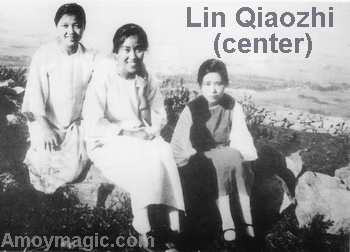
Madame Dr. Lin Qiaozhi
Pioneer Obstetrician and Gynecologist Over
1000 years ago Chinese women transformed the male Guanyin into the “goddess
of mercy” because male deities lacked compassion for the “weaker”
sex. And male doctors, like male deities, were not especially known for
sympathy with women’s unique needs, so by the twentieth century,
Chinese women were ready for Madame doctor Lin Qiaozhi—a product
of Gulangyu’s pioneering education of women.
Over Lin’s 60-year career she personally delivered over 50,000 children,
and her compassion and dedication won the hearts of men and women alike,
many of whom named babies after her.
Lin was born on Gulangyu Islet on 23rd December, 1901, and grew up at
#47 Huangyan Rd. She always excelled in school, perhaps because her parents
were teachers. She said, “If boys can get a grade of 100, then I'll
get 110!”
A teacher at the Gulangyu Girls Normal School saw Lin crocheting on a
hot summer’s day and said, “You have such great hands. You
should be a doctor!” Lin blushed, but that comment helped set her
course in life.
In 1921, Ms. Lin entered the grueling eight-year program at Beijing Union
Medical College, and earned her doctor of medicine degree from New York
State University (40% of her classmates never graduated). In spite of
her diligence as a scholar she was very easy going, and loved singing
with friends and reading English novels every night until 1 or 2 in the
morning.
In 1932, Lin studied at the London Medical College and the Manchester
Medical College, and the following year toured Vienna on a medical research
trip. Seven years later, she studied in the Chicago Medical College. After
returning to Beijing, she was appointed a hospital’s director of
obstetrics and gynecology--the 1st woman in China to have such a position.
Lin Qiaozhi never married but was close to her extended family. Her brother,
Lin Zhenming, financed her studies at Beijing Union Medical University,
and after her graduation she footed the bill for her older brother’s
four children to attend Yanjing University. After liberation, she made
a list of her relatives in Fujian and sent money to them until she passed
away.
Dr. Lin was a model teacher, as well as writer and editor of such books
as “Advice on Family Health.” She also chalked up many firsts.
In 1955, she became the first female member of the Learned Department
of Academia Sinica. In 1956, she was appointed vice-chairwoman of the
China Medical Association. In 1959, she took up the position of director
of the Beijing Maternity Hospital, as well as deputy director of the Chinese
Academy of Medical Sciences.
In 1978, Lin became vice chairwoman of the National Women’s Federation
of China, and visited four West European countries as the deputy head
of the Chinese People’s Friendship delegation. But while in Britain,
she suffered a brain hemorrhage, and was hospitalized for half a year
before returning to China.
In 1980, Dr. Lin suffered another hemorrhage. On April 22nd, 1983, she
passed away at the age of 82, having devoted her entire life to thousands
of mothers and babies at the Beijing Union Medical College Hospital and,
indirectly, to millions of women and children throughout China. 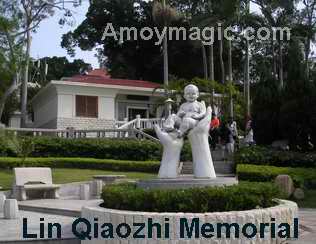
In 2001, famous doctors and prominent health officials and government
leaders gathered in Beijing to celebrate the 100th anniversary of Lin’s
birth. Officials unveiled a copper statue of the doctor, and announced
the new Lin Qiaozhi gynecological and obstetrics research institute at
the Chinese Academy of Medical Sciences. Premier Li Peng wrote an inscription
that reads, “Forever cherish the memory of outstanding medical scientist,
Lin Qiaozhi.”
Learn more about Dr. Lin at the Lin Qiaozhi Memorial Hall on Zhangzhou
Road, just past Fuxing church. This beautiful garden, with its sculptures
of children and white marble statue of Lin, was built the year after Dr.
Lin passed away, in 1984. The Exhibition Room tells her life story. A
row of stone “books” along Zhangzhou Rd. shares such Lin quotes
as:
“During the times I am not working, I feel lonely and isolated and
as if life has no meaning.”
How Ancient China Discovered (and lost!) Surgery
(From McGowan, 1913, pp.176-9)“…There was not a doctor in the Empire who knew anything of anatomy and for any one of them to have performed a serious surgical operation would have meant certain death to the patient. [But]…
“Tradition tells the story of one famous doctor [Huatuo], who lived in the misty past, and whose prescriptions form part of the medical library of every regular practitioner, that is intensely interesting. He seems to stand out more prominently than any of the others who have become conspicuous in the history of medicine, because he evidently had the ambition and perhaps the genius to inaugurate a new system in the treatment of diseases. He evidently felt there were occasions when the knife ought to be used if life were to be saved.
“On one occasion a military officer had been severely wounded in the arm by a poisoned arrow in a great battle in which he had taken part. The doctor, who for long centuries has been a god, and shrines and temples have been erected in which his image sits enshrined, was summoned to his assistance. He saw at a glance that unless heroic measures were at once adopted the man would die of blood-poisoning.
Contrary to the universal practice then in vogue, he cut down to the very bone, extracted the arrow, and scraping away the poison that might have been injected into the flesh, he bound up the gaping wound, using certain soothing salves to assist Nature in her process of healing.
“The result proved a great success, and might have been the means of introducing a new era in the treatment of diseases throughout China.
“Not long after a high mandarin [Caocao], who had heard of the wonderful cure, summoned the same doctor to prescribe for him. He had been greatly troubled with pains in his head, and no medical man that had attended him had been able to give him any relief. His case having been carefully diagnosed, the doctor proceeded to tell him what he thought ought to be done.
“I find,” he said, “that what really is the matter with you is that your brain is affected. There is a growth upon it, which, unless it is removed, will cause your death.
Medicine in this case,” he continued, “will be of no avail. An operation will have to be performed. Your skull must be opened, and the growth that is endangering your life must be removed.
“The thing, I think, can be safely done, and your health will be perfectly restored, and you may continue to live for a good many years.
“If you are pleased to confide in me, I have full confidence in myself that I can do all that is needed to restore you to perfect health.
“Whilst he was talking a cloud had been slowly gathering over the mandarin’s face. His eyes began to flash with excitement and a look of anger to convulse his face. In a voice tremulous with passion, he said: “You propose to split open my skull, do you? It is quite evident to me that your object is to murder me. You wish for my death, but I shall frustrate that purpose of yours by having you executed.” Calling a policeman, he ordered him to drag the man to prison, whilst he gave orders to an official who was standing by that in ten days hence the doctor should be decapitated for the crime of conspiring against his life.
“During the days he was in prison he so won the heart of the jailer by his gentleness and patience that he showed him the utmost devotion and attention. The evening before his execution, he handed over to him some documents that he had been very carefully preserving, and said, ‘I am most grateful to you for the kindness you have shown me during the last few days. You have helped to relieve the misery of my prison. I wish I had something substantial to give you to prove to you my appreciation of the sympathy and tender concern you have manifested towards me.
“’There is one thing, indeed, that I can bestow on you, and that is the manuscripts of all the cases I have attended. These,” he said, handing them to the jailer, “will raise your family to wealth and honor for many generations yet to come. They explain the methods I have employed in the treatment of disease. Never part with them; neither let the secrets they contain be divulged by any of your posterity, and so long as your descendants are faithful to them poverty shall never shadow the homes of your sons and grandsons nor of their children after them.’
“Next day this great medical genius was foully put to death merely to satisfy the caprice of an ignorant official, and the first dawn of surgical enterprise was eclipsed by his death, and many a tedious century would have to drag its weary way along before the vision that had died out in blood would again appear to deliver the suffering men and women of China.”
![]() Favorite
Fujian Sites
Favorite
Fujian Sites ![]() Fujian
Foto Album
Fujian
Foto Album ![]() Xiamen
Xiamen
![]() Gulangyu
Gulangyu
![]() Fujian
Guides
Fujian
Guides ![]() Quanzhou
Quanzhou
![]() Zhangzhou
Zhangzhou
![]() Longyan
Longyan
![]() Wuyi
Mtn
Wuyi
Mtn ![]() Ningde
Ningde
![]() Putian
Putian
![]() Sanming
Sanming
![]() Zhouning
Zhouning
![]() Taimu
Mtn.
Taimu
Mtn. ![]() Roundhouses
Roundhouses
![]() Bridges
Bridges
![]() Jiangxi
Jiangxi
![]() Guilin
Guilin
![]() Order
Books
Order
Books![]() Readers'
Letters
Readers'
Letters
Last Updated: May 2007
![]()
DAILY LINKS
![]() FAQs
Questions?
FAQs
Questions?
![]() Real
Estate
Real
Estate
![]() Shopping
Shopping
![]() Maps
Maps
![]() Bookstores
Bookstores
![]() Trains
Trains
![]() Busses
Busses
![]() Car
Rental
Car
Rental
![]() Hotels
Hotels
![]() News
(CT)
News
(CT)
![]() Medical
& Dental
Medical
& Dental
![]() YMCA
Volunteer!
YMCA
Volunteer! ![]()
![]() XICF
Fellowship
XICF
Fellowship
![]() Churches
Churches
![]()
![]() Expat
Groups
Expat
Groups
![]() Maids
Maids
![]() Phone
#s
Phone
#s
EDUCATION
![]() Xiamen
University
Xiamen
University
![]() XIS(Int'l
School)
XIS(Int'l
School)
![]() Study
Mandarin
Study
Mandarin
![]() CSP(China
Studies)
CSP(China
Studies)
![]() Library
Library
![]() Museums
Museums
![]() History
History
DINING
![]() Restaurants
Restaurants
![]() Asian
Asian
![]() Veggie
Veggie
![]() Junk
Food
Junk
Food
![]() Chinese
Chinese
![]() Italian
Italian
![]() International
International![]()
![]() Visas
4 aliens
Visas
4 aliens
RECREATION
![]() Massage!
Massage!
![]() Beaches
Beaches
![]() Fly
Kites
Fly
Kites
![]() Sports
Sports
![]() Boardwalk
Boardwalk
![]() Parks
Parks
![]() Pets
Pets
![]() Birdwatching
Birdwatching
![]() Kung
Fu
Kung
Fu ![]() Hiking
Hiking
![]() Music
Events
Music
Events
![]() Festival&Culture
Festival&Culture
![]() Humor&
Humor&![]() Fun
Fotos
Fun
Fotos![]()
BUSINESS
![]() Doing
Business
Doing
Business
![]() Jobs!(teach/work)
Jobs!(teach/work)
![]() Hire
Workers
Hire
Workers
![]() Foreign
Companies
Foreign
Companies
![]() CIFIT
(Trade Fair)
CIFIT
(Trade Fair)
![]() MTS(Translation)
MTS(Translation)
![]()
Back to Top
